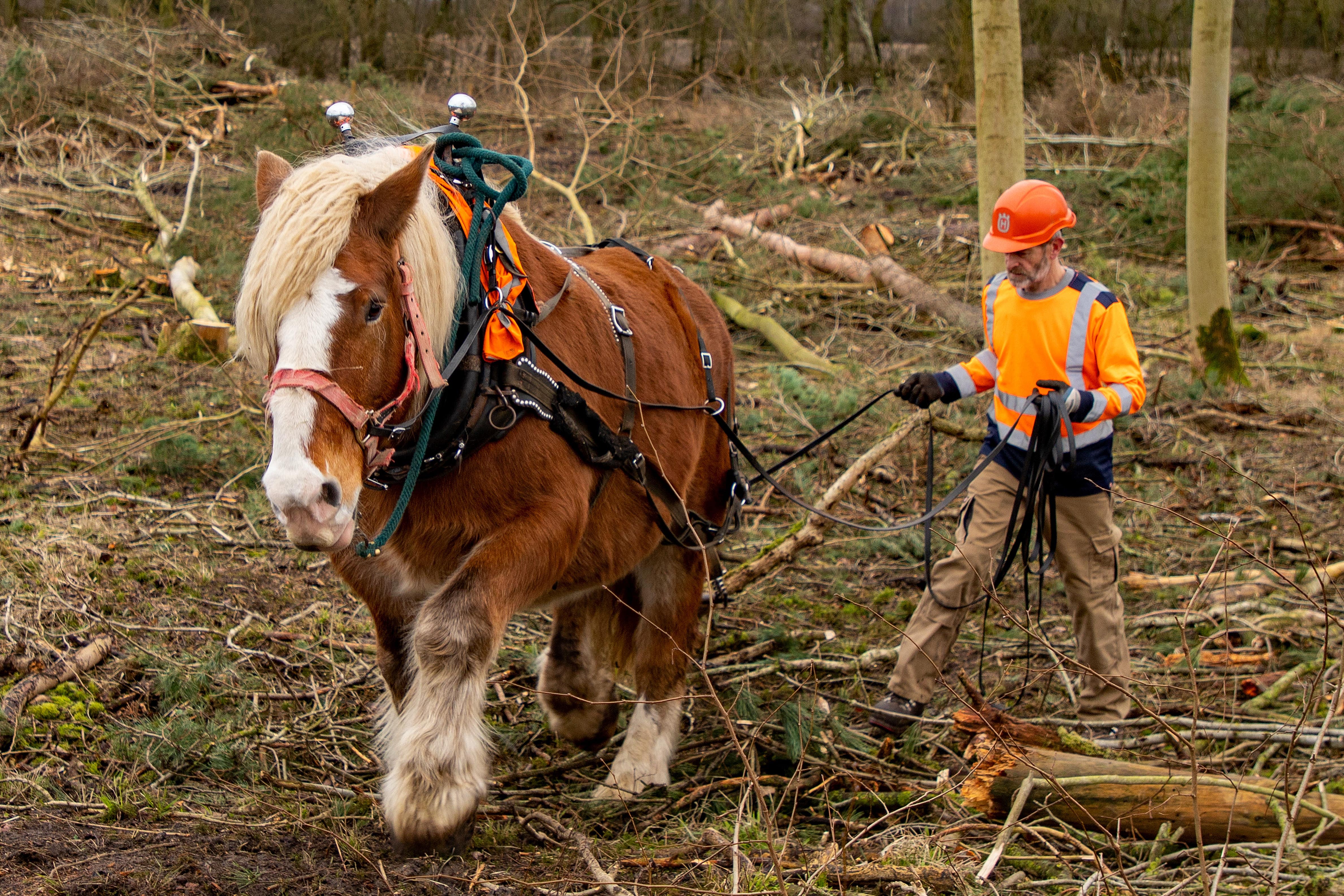Rare breed horses help with biodiversity push at National Trust estate
Two horses including one Suffolk Punch will help clear pine logs from the Oxburgh Estate in Norfolk.

Two rare breed horses are helping to drag pine logs clear of a plantation at a National Trust estate so that a wider variety of trees – less vulnerable to being wiped out by one single illness – can be planted.
The hooves of the Suffolk Punch and the Ardennes Comtois cross will cause minimal damage to the local soil and wildlife at the Oxburgh Estate in Norfolk compared to heavy logging machinery, the National Trust said.
An area of pine plantation, planted in the 1970s for timber production, is to be repopulated with native mixed broadleaves including hazel, oak, walnut, and sweet chestnut.
This is designed to increase the woodland’s resilience to climate change and disease, helping to lessen the risk of trees being wiped out by one single illness, the National Trust said.
It is hoped it will prevent severe damage like that caused by ash dieback, according to the conservation charity.
Tom Day, the National Trust’s Area Ranger for Oxburgh Estate, said: “This is a crucial time for us to double down on our parkland conservation efforts.
“Right now, the area of the pine plantation is severely lacking in biodiversity and contains 50% less wildlife than in the rest of our woodlands.
“By repopulating it with mixed broadleaf trees, we not only increase the structural diversity of the woodlands which will help maintain them for the long-term, but also vastly improve the quality of the habitat to attract more species and more diverse wildlife.
“In other parts of our parklands, we are already seeing the positive effects of this kind of work in the form of dark green fritillary and silver washed fritillary butterfly sightings.
“As we are able to open up the dense canopy of the woodland allowing light onto the woodland floor, such sightings will become increasingly common, and with some luck we might even be able to spot purple emperor butterflies in the future.
“Including a Suffolk Horse in the management of the property’s woodlands the project also serves as an important contribution to contemporary conservation efforts for this rare breed and mirrors how such work would have been carried out, as long as 400 years ago.”
Suffolk Horses, also historically known as the Suffolk Punch, are native to the region, and is one of only four English breeds of heavy horse bred specifically for ploughing and pulling loads.
It is these “gentle giants” that helped to shape the area’s rural landscape.
However, due to the mechanisation of farming, the Suffolk Horse’s numbers rapidly declined in the 20th century and with less than 500 horses registered in the UK today they are classed as critically endangered by the Rare Breeds Survival Trust and listed on the priority watchlist, the National Trust said.
During select phases, the Suffolk Horses’ work will be accompanied by a modern timber harvester.
The project is part of the National Trust’s 10-year sustainable woodland management plan for the region, which will run until 2029 across various locations in East Anglia.
Bookmark popover
Removed from bookmarks